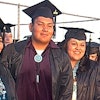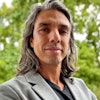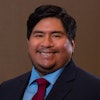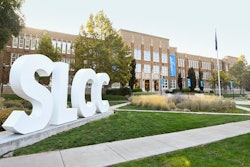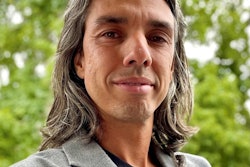DAVIS, Calif.
The first time Jose Freeman heard his tribe’s lost language through the crackle of a 70-year-old recording, he cried.
“My ancestors were speaking to me,” Freeman said of the sounds captured when American Indians still inhabited California’s Salinas Valley. “It was like coming home.”
The last native speaker of Salinan died almost a half-century ago, but today many indigenous people are finding their extinct or endangered tongues, one word or song at a time, thanks to a linguist who died in 1961 and scholars at the University of California, Davis, who are working to transcribe his life’s obsession.
Linguist John Peabody Harrington spent four decades gathering more than 1 million pages of phonetic notations on languages spoken by tribes from Alaska to South America. When the technology became available, he supplemented his written records with audio recordings first using wax cylinders, then aluminum discs. In many cases his notes provide the only record of long-gone languages.
Martha Macri, who teaches California Indian Studies at UC Davis and is one of the principal researchers on the J.P. Harrington Database Project, is working with American Indian volunteers to transcribe Harrington’s notations. Researchers hope the words will bridge the decades of silence separating the people Harrington interviewed from their descendants.
Freeman hopes his 4-month-old great-granddaughter will grow up with the sense of heritage that comes with speaking her ancestors’ language. “When we lose our language, we’re getting cut off from our roots,” he said. “The world view that our ancestors carried is quite different from the Euro-American world view. And their language can carry that world view back to us.”
Although it will be years before all the material can be made available, some American Indians connected to the Harrington Project have already begun putting it to use. Members of Freeman’s tribe gather on their ancestral land every month to practice what they’ve learned a few words, some grammar, old songs.
“The ultimate outcome is to get it back to the communities it came from,” Macri said.
By all accounts, Harrington was a devoted, if somewhat eccentric, scholar. Sometimes he spent 20 or 30 minutes on one word, saying it over and over until the person he was interviewing agreed he’d gotten the pronunciation correct, said Jack Marr, who met Harrington as a 12-year-old boy and worked as his assistant into his 20s.
“They trusted him,” Marr said of the Indians they worked with. “A lot of people, if they tried to walk in and say ‘I want to record you,’ they’d get thrown out. But not Harrington. I think people recognized that we were doing this for posterity.”
Harrington’s sense of urgency animates the letters he sent to Marr nearly every day.
“Rain or no rain, rush,” Harrington said in one letter. “Dying languages depend on you.”
However, that same drive has confounded efforts to pass the words down to new generations.
For instance, Harrington was so focused on gathering information that he spent little time polishing his work for publication, according to Marr. He hated wasting precious time being cooped up in an office.
And he was so deeply mistrustful of other researchers that he stashed much of his research as he traveled, deliberately keeping it out of reach of his colleagues. He kept even his employers at the Bureau of American Ethnology now the National Anthropological Archives in the dark about where he was and what he was doing, routing his mail through Marr’s mother to cover his tracks.
After his death, the federal archives received boxes of Harrington’s notes, recordings and other material from people who found them in barns and basements across the West. It took the archives until 1991 to transfer the voluminous notes to microfilm.
While linguists, archaeologists, botanists and others have spent the years since combing through the files, Macri says the trove of information has remained all but inaccessible to members of the tribes themselves.
The Harrington Project was created with the goal of returning the words to the people who can imbue them with life again, as well as making the material more accessible to scholars.
The researchers are teaching tribal members across California how to read Harrington’s cramped handwriting and decipher his notation system.
Macri’s team focuses on the more than 100 California languages Harrington catalogued, such as Wiyot, Serrano and Luiseno, for which there are few other records.
“It would be hard to exaggerate the linguistic diversity that existed at one time in California,” Macri said. “It was more common to be multilingual than not.”
Jacob Gutierrez, a member of the San Gabriel Band of Mission Indians “Pipiimaram,” in the tribe’s own language has decoded all the material Harrington gathered on his people over 6,000 pages, and is now working on information about their linguistic neighbors.
“I find it to be the most rewarding work I have ever done,” he said. “Every new word, story or song is an absolute treasure for me and my people.” Karen Santana, who started working on Harrington’s notes about her Central Pomo tribe while she was a student at UC Davis, is drawing plans for a dictionary with phonetic spellings.
“I want to develop a system that will make sense to others,” Santana said. “It’s a lifelong goal, publishing something so that my tribe can refer to.”
Marr said Harrington would have been satisfied to see languages born again from his notes and recordings. “But he would have felt very sad he didn’t get more. He always wanted to do more.”
On the Net:
Harrington Database Project: http://nas.ucdavis.edu/NALC/JPH.html
Click here to post and read comments
© Copyright 2005 by DiverseEducation.com

